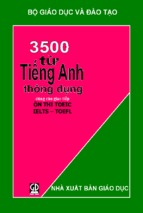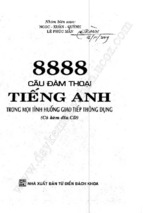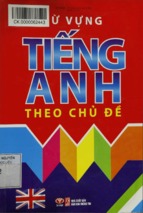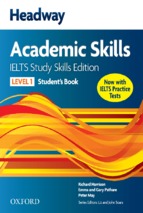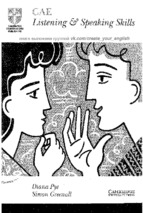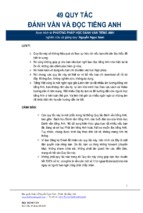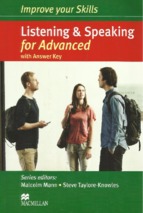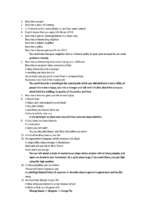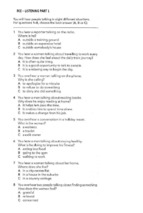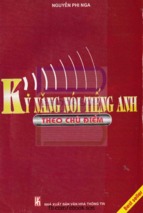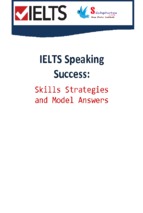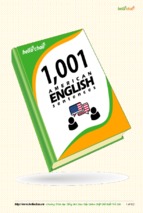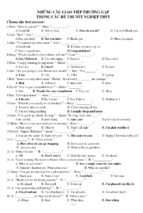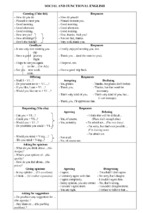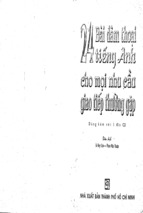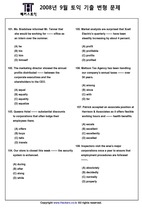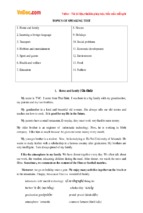CONTENTS
Preface
Chapter 1
Chapter 2
Chapter 3
Chapter 4
vii
Methods, Techniques, and Tools for the On-line Study of the
Writing Process
Thierry Olive
1
Stepwise Computer-Based Scaffolding for Academic Writing: How
It Affects Writing Activities, Performance, and Motivation
Antje Proske
19
Readability Formulae, Cloze Tests, and Computerized Textual
Analysis for Testing Language Skills: Are They Useful?
John Ludbrook
39
Strategies, Tools and Techniques for the Development of Written
Communication Metasociocognitive Processes
Rosario Arroyo González and Coral Ivy Hunt Gómez
57
Chapter 5
Self-Assessment and Learning to Write
Heidi L. Andrade and Georgia C. Brooke
75
Chapter 6
How Busy Clinicians Can Write Scholarly Papers
John E. Mullinax, Jonathan M. Hernandez, Sharona B. Ross,
Linda K. Barry and Alexander S. Rosemurgy,
91
Chapter 7
Teaching Undergraduates to Write Publishable Material
John P. Canal
101
Chapter 8
Breaking the Rules: Writing Reflectively for Yourself
John Cowan
109
Chapter 9
Developing the Self-Regulation of Writing Process in Students
with Learning Disabilities
Jesús-Nicasio García and Raquel Fidalgo
Chapter 10
Cognitive Strategic and Self-Regulated Instruction in Writing
Processes
Raquel Fidalgo, Olga Arias-Gundín, Jesús Nicasio García and
Mark Torrance
Index
115
129
153
Thuvientailieu.net.vn
PREFACE
Writing is a complex and cognitively demanding activity. To be successful, writers need
an understanding of the components of a quality test as well as knowledge of writing
strategies that can be used to shape and organize the writing process. This new book discusses
academic writing as a complex task which involves a variety of cognitive and metacognitive
activities; a model for teaching writing strategies and the sociocultural processes of written
communication; rubric-referenced self-assessment and the quality of elementary and middleschool students' writing and self-efficacy and others.
Chapter 1- In the field of writing studies, the shift between the product-oriented approach
to the process-oriented one has resulted not only in conceptual changes in the theories of
writing, but also in development of methods and techniques that have enabled us to study the
writing process. These real-time or on-line methods track the writing processes while they are
operating in order to describe their time course and their functional characteristics. Generally,
these methods focus on three features of writing: writing fluency through the analyses of
pauses and execution periods, functional characteristics of the writing processes with
thinking-aloud techniques, and their demands on working memory with dual-task designs.
The most common tools used for that purpose are computers with digitizing tablets and
keystroke recording programs. Moreover, recently, a new perspective has been opened by the
analysis of the writer‘s eye movement coupled to the analysis of the on-going text. Some
scarce research has also attempted to investigate writing with brain imagery techniques. All
these methods are shedding light on the cognitive operations necessary to compose a text.
Consequently, the aim of this chapter is to provide readers with an overview of these methods
and tools in order to figure out how to conceptualize and design new experiments. In parallel,
through the presentation of these methods and of the tools that are required to implement
them, this chapter also delineates the issues that are currently addressed in research on
writing.
Chapter 2- Academic writing is a complex task that involves a variety of cognitive and
metacognitive activities. One approach to assist writers in dealing with the problem of
managing their resources during writing is to scaffold writing by computer. Unfortunately,
empirical research on computer-based scaffolding (CBS) of writing is quite limited, and the
results are mixed. An explanation for these results may be found in the design of the
scaffolding. Most CBS support discrete writing activities, independently from the writing
process. This chapter seeks to contribute to the question of how to design CBS which
supports the academic writing process as a whole. As a basis for the design, the subtask
Thuvientailieu.net.vn
viii
Nathan L. Mertens
model of academic writing is presented which explicitly describes the demands of academic
writing. This model is derived from theoretical and empirical findings on expert writing. The
implementation of CBS for expert writing activities into the writing environment escribo is
then described. The CBS stepwise supports the application of these expert writing activities.
To this end, escribo decomposes the writing process in its subtasks and provides specific
instruction and tools for the completion of each activity. Furthermore, two evaluation studies
on the effects of the writing environment are summarized. The results show that working with
escribo is superior to a situation without CBS. Implications of these results will be discussed
with regard to the benefits and restrictions of fostering expert writing activities through
computer-based scaffolding.
Chapter 3- I describe nine popular readability formulae. These are designed to evaluate a
piece of English text in terms of the age or grade level of school students at which it should
be readable. By example and argument I conclude that these formulae are of only limited use:
perhaps as a cheap and easy method for evaluating school textbooks and library holdings. The
family of cloze tests is designed to evaluate grammar, vocabulary and reading comprehension
by making use of communication theory and the redundancy principle. The most popular are
the classical cloze procedure and the C-test. Both are reasonably reliable, but the former is
arguably the more valid. Both have been used in many countries and many languages as part
of the testing of scholastic ability in the candidates‘ native languages or in second languages,
though using trained assessors remains the yardstick. The Coh-Metrix project examines the
coherence of text according to 60 categories, but is still in the course of development and
seems not to be flawless. Lexical analysis is a computer-intensive tool for evaluating the
active vocabulary used in producing a piece of text. It provides an objective measure of the
progress of students who are learning English, especially as a second language. It has also
been used to evaluate the quality of English teachers and teaching. But though I am only an
outsider looking in, I am forced to conclude that the only truly valid method for evaluating
language skills is by trained human assessors.
Chapter 4- This paper proposes a model for teaching writing strategies, tools and
techniques within a new aim pursuit. The new objective is the simultaneous development of
cognitive and sociocultural processes of written communication for the citizens of the 21st
Century. This didactic model is justified by the exigencies of multicultural and technological
societies. In order to enter the labour world, to have access to knowledge, information and
social relation structures, current societies request two basic competences to their citizens: a)
use and command of IT technologies and b) communication in different languages. Written
verbal language in a multilingual and multimodal fashion is being given priority in the
development of both competences. That is why the didactic model offers strategies with the
aim of developing: 1) multimodal writing cognitive processes and operations, using the
computer; 2) writing sociocultural processes using different languages, that is to say, in a
multilingual way.
To achieve simultaneously the already mentioned aims, the tools and techniques of the
didactic model have to be creative. However, these aims, tools and techniques are based on
the Metasociocognitive Model which explains written communication as the integration of
cognitive and sociocultural processes. The Writing Metasociocultural Model is interactive
focused on research and theoretical reflection about writing. It has been functioning since the
70´s.
Thuvientailieu.net.vn
Preface
ix
Also, the Creative, Shared Technological Model (CCT-Model) of Writing-Teaching, is
based on the results of an ethnographic research project, concretely, a case study. In this
project, writing-teaching is deeply studied applying the content analysis method and
validation processes such as triangulation, saturation and crystallization. The new
contribution covered in this project is the global approach offered of every possible variable
interacting with the writer in a multicultural classroom. The conclusions of the case study
allow to design strategies, tools and techniques to enhance the development of all writing
processes, from a practical teaching point of view. Finally, sociocultural justification and
theoretical research based documentation of the Writing-Teaching Model, support a future
multimethod research, which is currently in process. This research project aims to the
validation of a Writing-Teaching program (based on the already mentioned models), in
multicultural samples of subjects, with control and experimental groups. The objectives of
this project are, on the one hand, calculation of the effectiveness of the program and, on the
other hand, analysing thoroughly the teaching process when applying writing tools.
Chapter 5- This chapter reviews several recent studies of the relationships between
rubric-referenced self-assessment and the quality of elementary and middle school students‘
writing and self-efficacy for writing. The self-assessment process employed in each study
emphasized the articulation of criteria and a carefully scaffolded process of review by
students, followed by revision. Taken together, the studies show that rubric-referenced selfassessment is associated with more effective writing, as evidenced by higher total scores for
essays written by students in the treatment condition, as well as higher scores for each of the
criteria on the scoring rubric. The reviewed research also reveals an association between the
treatment and the self-efficacy of girls for writing. The chapter includes a review of relevant
literature, a detailed description of the process of self-assessment, a report on the studies, and
a discussion of the implications for teaching and research.
Chapter 6- Some of the difficulties busy clinicians face are time constraints and
limitations on creativity. It is difficult to have a strong clinical focus and yet find the time and
energy to devote toward scholarly productivity. Often, there seems to be insufficient time to
―put pen to paper.‖ When time permits, creativity is often lacking because of fatigue or
concerns about other issues. As the day-to-day responsibilities take their toll, it can be
difficult to express the scholarly interest that serves as the foundation for an academic career.
An interesting project or study can become lost in the shuffle of accomplishing more
mundane tasks.
This manuscript serves as a template to guide busy clinicians in writing papers of
scholarly value. Input from surgeons at various levels of accomplishments and at wide
ranging stations in their careers makes this of value to a broad audience. Our focus is on
young academicians without notable experience in writing scholarly papers. In the pages that
follow we elaborate on the writing of the essential elements of a peer-reviewed manuscript.
Chapter 7- A writing assignment, which develops the skills required of a published
author, is hereby described. It has been developed for undergraduate chemistry students with
limited research and writing experience. This assignment is part of a writing intensive
program developed at Simon Fraser University (SFU), where writing is used as an
educational tool. As part of this assignment every student is required to submit a Chemical
Laboratory Information Profile (CLIP) on one of the chemicals used or produced in a second
year chemistry laboratory course. These profiles are used to introduce students to the riggers
of publications, the requirements of efficient exchange of ideas and how to research the
Thuvientailieu.net.vn
x
Nathan L. Mertens
hazards related to the chemicals used in the undergraduate laboratory setting. The CLIPs are
later used by the students in the laboratory.
Chapter 8- The rules which epitomise good writing may on occasions be broken,
deliberately and with good purpose. This can well occur when students or staff set out to
engage effectively, and through reflective writing, with their personal and professional
development in mind. The rationale for this unusual decision to engage in what is frankly
disorderly writing is set out briefly. Its characteristics are summarised, in implicit contrast
with more conventional styles of writing. Brief mention is made of claims for the
effectiveness of this style when used for developmental purposes; and reference is made to
the publications of some of those who have endorsed this approach.
Chapter 9- Since the seminal theoretical models of writing (such as Bereiter &
Scardamalia, 1987; or Hayes & Flower, 1980) there has been considerable progress as regards
the understanding of the cognitive processes and personal variables involved in writing
(Alamargot & Chanquoy, 2001; MacArthur, Graham, & Fitzgerald, 2006). The majority of
these models recognize writing as a complex and demanding task which involves a large set
of higher and lower order cognitive processes, which must be activated and coordinated
recursively throughout the entire writing process. This complexity explains that achieving
proficiency in writing requires the deployment of a great load of writer‘s cognitive resources
to cope with managing and monitoring the writing environment, the constraints imposed by
the writing topic and task, and the processes and variables involved in composing a text
(Graham and Harris, 2000; Kellogg, 1987a; Ransdell and Levy, 1996; Zimmerman and
Risemberg, 1997). In fact, coordinating these processes in such a way that yields a text which
fulfills the requirements of the writing task requires high levels of self-regulation. Since the
greater importance afforded to the self-regulatory processes in writing, in this chapter, firstly,
we analyze the specific role of self-regulation in the more recent theoretical models of writing
and in the instructional field of writing composition. In the second part of the chapter, we
summarize in part our previous intervention study (see García & Fidalgo, 2006), developed
with 5th and 6th grade Spanish primary students with Learning Disabilities. The study presents
the effectivenes of a self-regulation strategy intervention program based on the Social
Cognitive Model of Sequential Skills Acquisition to improve LD student‘s writing
competence, analyzing changes in writing product and process through on-line measures.
Finally, proposals for future researches and implications for educative practice are suggested.
Chapter 10- Writing is a complex and cognitively demanding activity. It cannot be
performed as a sequence of discrete steps; it requires the simultaneous combination of several
strategies and the application of various mental resources. Writing is, therefore, both a
recursive and a dynamic process. To be successful, writers need an understanding of the
components of a quality text as well as knowledge of writing strategies that can be used to
shape and organize the writing process. In particular, writing competence requires appropriate
and self-regulated knowledge of strategies for planning what to write, and then revising what
has been written.
In this chapter, we first present a review of the recent research on the planning and
revision processes in writing in order to show the importance that these have in the
development of writing competence. Then, we describe the existing research, evaluating
strategy-focused intervention studies, to provide an overview of the nature of the
interventions programs and an indication of which have been most successful. In the second
part of the chapter, we describe and summarize findings from our own studies (Torrance,
Thuvientailieu.net.vn
Preface
xi
Fidalgo, & García, 2007; and Fidalgo, Torrance, & García, 2008). These studies move
beyond existing research by (a) evaluating the effectiveness of this kind of intervention
programs for developing self-regulations strategies in writing with normally achieving writers
without learning disabilities, b) exploring the effects of strategy focused instruction on
students‘ writing processes as well as on their written products and (b) demonstrating the
long-term effects of this kind of intervention. In a final section, we discuss the practical
implications of this body of research (both ours and others) and make suggestions for how
lessons learned from this research might be applied in the classroom.
Thuvientailieu.net.vn
Thuvientailieu.net.vn
In: Writing: Processes, Tools and Techniques
Editor: Nathan L. Mertens, pp. 1-18
ISBN: 978-1-61668-916-2
© 2010 Nova Science Publishers, Inc.
Chapter 1
METHODS, TECHNIQUES, AND TOOLS FOR
THE ON-LINE STUDY OF THE WRITING PROCESS
Thierry Olive1*
Centre National de la Recherche Scientifique & Université de Poitiers, France
ABSTRACT
In the field of writing studies, the shift between the product-oriented approach to the
process-oriented one has resulted not only in conceptual changes in the theories of
writing, but also in development of methods and techniques that have enabled us to study
the writing process. These real-time or on-line methods track the writing processes while
they are operating in order to describe their time course and their functional
characteristics. Generally, these methods focus on three features of writing: writing
fluency through the analyses of pauses and execution periods, functional characteristics
of the writing processes with thinking-aloud techniques, and their demands on working
memory with dual-task designs. The most common tools used for that purpose are
computers with digitizing tablets and keystroke recording programs. Moreover, recently,
a new perspective has been opened by the analysis of the writer‘s eye movement coupled
to the analysis of the on-going text. Some scarce research has also attempted to
investigate writing with brain imagery techniques. All these methods are shedding light
on the cognitive operations necessary to compose a text. Consequently, the aim of this
chapter is to provide readers with an overview of these methods and tools in order to
figure out how to conceptualize and design new experiments. In parallel, through the
presentation of these methods and of the tools that are required to implement them, this
chapter also delineates the issues that are currently addressed in research on writing.
*
Corresponding author: Thierry Olive, Centre de Recherches sur la Cognition et l‘Apprentissage, 99 avenue du
recteur Pineau, F-86000 Poitiers, FRANCE. E-mail :
[email protected].
Thuvientailieu.net.vn
2
Thierry Olive
1. INTRODUCTION
Composing a text engages several major cognitive components that intervene at different
levels of representation. At a semantic level, a component, called planning, allows writers to
retrieve ideas they want to include in their text from their long-term memory. With that
component, writers can also organize these ideas into a textual plan that fits the rhetorical
goals of the writing situation. A second component, the translator or formulator, intervenes at
a linguistic level of representation to transform the pre-verbal message constructed by
planning into written language. For that purpose, the syntactic framework of sentences is first
constructed and words are then retrieved from the mental lexicon along with their
morphological properties and orthographical form. A third component, which operates at a
motor level, is used by writers to transcribe the verbal message in a written form (typing or
handwriting). One specific feature of writing is permanency of the written trace, which
permits writers to come back to their text and to try to improve it if needed. For that purpose,
writers engage a fourth cognitive component that monitors quality and adequacy of their text.
With these monitoring processes they can read their on-going text, diagnose problems they
have detected, and edit them if it is necessary. In that case, according to the nature of the
problem (e.g., conceptual, linguistic or related to handwriting) they call back the planning,
translating or execution components. Obviously, such monitoring can also occur mentally,
namely before the prepared message is written down, for instance at the exit of the planning
and translating components. One goal of on-line studies of writing is thus to track when and
how these processes are implemented by writers, but also how they are affected by factors
related to the writing situation or by cognitive characteristics of the writers.
One factor that severely affects how writing processes are implemented is working
memory. Writing is indeed one of the most effortful activities that humans can implement
(Kellogg, 1994, Piolat, Olive & Kellogg, 2005). Since working memory is the cognitive
structure in charge of managing cognitive resources and of supervising implementation and
coordination of the cognitive processes (e.g., Baddeley, 2000; Cowan, 2005), writing research
has focused on the role of working memory in writing (Berninger & Swanson, 1994; Kellogg,
1996; McCutchen, 1996, 2000; Olive, 2004, in press). When managing the flow of written
production, writers indeed have to stay within the limited capacity of working memory. For
this, they resort to mechanisms that minimize the amount of resources required by writing. A
well-known mechanism that reduces the amount of resources devoted to a particular process
is automatisation. With practice, operations frequently implemented require fewer resources
and become automatized. Moreover, they can be coordinated in parallel with other processes.
Strategic activation of the cognitive processes is also important (Brown & Carr, 1989). When
the resources necessary to accomplish a task exceed the amount of resources available, the
individual is faced with two options. First, it can accommodate this extra cost and start all
processes necessary to accomplish the task. However, this type of operation is risky because it
usually leads to low performance (Fayol, 1999). For example, in the case of writing, texts can
be syntactically or semantically less rich, and the writing process may be longer. Second, the
individual can switch from a parallel to a sequential activation of the processes to decrease
the general processing demands of the activity. In writing, it is often hypothesized that the use
of such strategies is a sign of skilled writing. In that perspective a second goal of on-line
studies of writing is to describe and assess the processing demands of the writing processes.
Thuvientailieu.net.vn
Methods, Techniques, and Tools for the On-line Study of the Writing…
3
In sum, to better understand the dynamic of the writing process, on-line methods aim at
describing the operations carried out by the writing processes by assessing their functional
characteristics (processing time, processing demands, mode of coordination). Of course, other
types of methods are used in research on writing. For example, with off-line methods,
researchers can analyze the written products and the textual operations to infer the underlying
writing processes. By contrast, on-line methods track the time course of the writing processes
at the time they are conducted. They include the analysis of writing fluency (the study of
pauses and of execution periods), the dual-task paradigm, the method of verbal protocols, the
analysis of writers‘ eyes movement, and more recently functional brain imagery.
2. PAUSES AND EXECUTION PERIODS IN WRITING
2.1. Theoretical and Methodological Basis
At a behavioral level, text composition can be characterized by two activities: pausing
and executing the text (handwriting or typing). Writers spend roughly half of the composition
time pausing or, conversely, handwriting (Alamargot, Dansac, Chesnet & Fayol, 2007; Alves,
Castro, Sousa & Strömqvist, 2007; Strömqvist & Ahlsén, 1999). Investigating the temporal
dynamic of writing thus requires studying pauses, but also execution periods.
Pauses — Pauses are interruptions of handwriting. However, among all the pauses that
can be detected during a writing process, not all pauses are of interest for research on the
cognitive processes underlying writing. Indeed, some pauses are only due to mechanical
demands of handwriting or of typing. For example, a writer tracing an ‗i‘ or a ‗t‘ needs to
interrupt handwriting for tracing the dot on the ‗i‘ or the bar of the ‗t‘. Similarly, when typing,
moving the fingers between keys create pauses that merely result from key position rather
than from occurrence of high-level writing processes. Accordingly, two kinds of pauses have
to be distinguished: pauses during which writing processes can occur, and pauses resulting
from handwriting or typing mechanical demands. The latter pauses are considered too short to
involve high-level writing processes, and so functionally they do not differ from handwriting.
Methodologically, it is thus indispensable to distinguish between pauses during which
handwriting has stopped long enough so that high-level writing processes do occur, from
mechanical pauses. For that purpose, defining a threshold affording such a distinction is
necessary. Very different thresholds varying between 130 ms and more than 5 seconds have
been used (in handwriting: 130 ms by Alamargot, Dansac, Chesnet, & Fayol, 2007; 200 ms
by Passerault, 1991; 250 ms by Olive & Kellogg, 2002; Olive, Alves & Castro, 2009; in
typing: 1 second by Alves, Castro & Olive, 2008; 2 seconds by Alves, Castro, Sousa &
Strömqvist, 2007; Levy & Ransdell, 1995; Schilperoord, 2002; Wengelin, 2007; 5 seconds by
Jansen, van Waes, & van den Berg, 1996). A recent finding suggests that the high-level
writing processes can occur during pauses shorter than a quarter of a second (Alamargot,
Dansac, Chesnet, & Fayol, 2007). To sum up, pauses that are of interest for the researcher on
text production are only those whose length is sufficient to allow the writing processes to
occur.
Thuvientailieu.net.vn
4
Thierry Olive
Pauses can occur when writers no longer have information to continue their text, or
because of competition between writing processes for limited capacity. Accordingly, pauses
would allow preparing the next segment of text. Pauses would also allow examining the text
already written to review it. This suggests that planning, translating and revision can all be
implemented during pauses (for confirmation, see Alves, Castro & Olive, 2008; Olive, Alves
& Castro, 2009).
Actually, two features of pauses are studied: pause duration and pause location. Pause
duration is supposed to reflect length of the underlying process(es). Here, researchers are
confronted with difficulty to assess whether several processes can be activated during one
single pause. Pause duration is also supposed to be a function of complexity of the processes
engaged in, and it is thus assumed to reflect processing load of the on-going processes
(Foulin, 1995; Schilperoord, 2002): longer pauses reflect cognitive processes that are more
effortful compared to load of processes reflected by shorter pauses. It is nevertheless difficult
to assume that a 20-second pause reflect a processing load ten times higher than a 2-second
pause. Moreover, this raises the question of independence between processing time and
processing load.
Pause location is also of great interest as pause duration systematically varies according
to structural characteristics of texts (e.g., words, phrases, sentences, paragraphs). For instance,
pauses are more frequent or longer at the border of large syntactic or textual unit (sentence,
paragraph) compared to low-level units. However, the covariation between pause duration
and syntactic location is not systematic. For example, Foulin (1998) attempted to explain
length of pauses according to their syntactic location by conducting various regression
analyses. He showed, first, that temporal organization of production is only partly predicted
by the text‘s syntactic structure. Secondly, he showed that if clauses can be considered as the
planning unit in speech production, in writing, the sentence could be a conceptual and
linguistic planning unit. It is also assumed that pause reflects the macro-and micro-structural
planning of text. Pauses between paragraphs and between sentences would mainly result from
knowledge management, so to conceptual planning (however, in the beginning of sentences,
syntactic and lexical processes might intervene jointly with conceptual planning); interpropositional pauses would indicate mainly formulating processes; breaks intra-propositional
pauses would be affected by predictability of lexical items.
The functions of pauses are actually poorly specified in writing research (see Torrance &
Galbraith, 2006), and because during pauses all working memory capacity is freed from
handwriting demands, pauses have generally been linked with the more effortful processes,
namely planning and revising (Foulin, 1995; Schilperoord, 2002). Pauses interpretation
remains however difficult given that many factors can affect pause durations and frequencies.
The coexistence of physiological factors, cognitive and social factors are all potential
determinants of the number, duration and location of pauses. Finally, it must be underlined
that pauses can also happen for reasons unrelated to the writing processes. For example,
writers can suspend writing because their mobile phone rung. Obviously, such pauses have to
be excluded of the analyses, but the difficulty is in identifying them.
Execution periods — Although writing research has traditionally focused on the studies
of pauses, in the preceding years research has turn attention to execution periods (or language
bursts according to Chenoweth & Hayes, 2001). Execution periods can be defined as the time
elapsed between two consecutive pauses during which a writing processes can occur.
Thuvientailieu.net.vn
Methods, Techniques, and Tools for the On-line Study of the Writing…
5
The interest of researchers for execution periods came from at least two outcomes. First
length of execution periods seems to be related to writing skill. For instance, Kaufer, Hayes,
and Flower (1986) observed in their study that the more experienced writers composed their
text in longer execution periods (that length be expressed in duration or in number of words
produced) than the less experienced writers did (see also Chenoweth & Hayes, 2001).
Friedlander (1989) observed a similar finding with second language composition compared to
first language text production. Execution periods are longer when texts are composed in first
language than in second language.
Second, it has been shown that skilled motor execution (handwriting or typing) frees
working memory capacity. Therefore, working memory capacity available during
handwriting is allocated to the high-level writing processes that can then be activated
concurrently, at least in adults. For example, Bourdin and Fayol (1994, 2002) showed that
performance of adults decreased when they had to recall series of digits or to compose
sentences using cursive capital letters, a rarely practiced and hence effortful calligraphy.
Olive and Kellogg (2002) also observed that children were unable to activate high-level
writing processes together with motor execution, and had to suspend handwriting to think
over their texts. Conversely, adults were able to activate simultaneously motor execution and
high-level writing processes. Chanquoy, Foulin and Fayol (1990) observed increased fluency
during the production of the last part of a sentence by contrast with fluency during the first
part of the sentence. According to the authors, during the first part of a sentence, adult writers
begin to plan or to translate the final part of the sentence, which is then written down without
any concurrent process to motor execution. Moreover, as eye movements indicate, adult
writers often read the text already produced to either create new content, or to evaluate what
has been produced so far (Alamargot, Dansac, Chesnet & Ros, 2006; Alamargot, Dansac,
Chesnet & Fayol, 2007). In sum, concurrent activation of high-level writing processes and
motor execution is now well documented. This underlined the fact that writing processes are
also activated during handwriting, and consequently that the study of execution periods may
also provide important information on how these processes are activated.
Some initial studies suggest that formulation processes may account for a large part in
variability of length of execution periods. For instance Chenoweth and Hayes (2003) have
shown that articulatory suppression, which was assumed by the authors to affect formulation
operations, reduces length of execution periods. Moreover, some studies also suggest that
handwriting skills are important contributor of length of execution periods. For instance,
Alves et al. (2007) observed that low skilled typists produce their text in shorter execution
periods than more skilled typists. Finally, Alves, Castro and Olive (2008) and Olive, Alves
and Castro (2009) have investigated nature of the writing processes activated during
execution periods. They have shown that all writing processes can be activated while
handwriting, but that formulation is the process most frequently activated concurrently to
handwriting. This findings is in line with the idea that formulation takes less resources from
working memory than planning or revision, and thus that it can be activated concurrently to
handwriting with more facility than the two other wiring processes. It also explains why
Chenoweth and Hayes (2001) have found that formulation seems to be the main determinant
of length of execution periods.
By contrast with pauses, only a limited number of study has investigated execution
periods. There is consequently not enough substantial data on parameters of execution periods
neither published review on the methodological and theoretical status of execution periods.
Thuvientailieu.net.vn
6
Thierry Olive
Nevertheless, execution periods already appear to reveal fruitful information on the temporal
dynamic of writing. Future systematic studies investigating how different writer- or situationspecific factors affect length and duration of execution periods are thus needed.
2.2. Tools for Detecting Pauses and Execution Periods
Initially, when research on writing processes began, pauses were detected by filming the
handwriting activity of a writer with a camera that included a built-in stopwatch. It was thus
possible to analyze the number of pauses and their duration by viewing image-by-image a
complete writing session. This method was however time-consuming and, with growing use
of personal computers, it was quickly abandoned in favor of digital records with word
processors and graphics tablets.
With graphic tablets, writers compose their text on a paper sheet and they use an
electronic pen filled with ink. Spatio-temporal data (location on the page of the pen with its
time line) are recorded and researchers can then playback the text and display all pauses at
their precise location. ―Eye and Pen‖ (Alamargot et al., 2006) is the most widely used
program to record and analyses pause data in handwritten text composition because it
proposes several options for easily recording and analyzing writing pauses. First, ―Eye and
Pen‖ provides a module for recording handwriting in different situations, from the simple
copy of words to free text composition. Moreover, researcher can display on the monitor of
the computer or even on screen digitizing tablets (such as the Cintiq Digitizing Tablet
distributed by Wacom) sources that writers can consult when they wish during writing. For
example, series of words to copy, images to denominate, or graphic illustration describe or
beginning of texts can be displayed. A second module proposed by Eye and Pen allows
researchers analyzing pauses data. Several general measures are proposed without requiring
any advanced analysis (for example the total time spent in pause, the number of pauses, the
mean time of a pause, etc.). More detailed and precise analyses can of course be carried out,
for example by analyzing pauses occurring at specific locations. Finally, Eye and Pen also
allows replaying the writing task in real time or by controlling how fast the text is ‗rewritten‘.
More information on Eye and Pen can be found on its website (eyeandpen.net).
A growing number of writers now compose their text with computers by using word
processor programs. In that case, pauses can be analyzed through keystrokes recording, which
provide a straightforward way for tracking the writers‘ actions, such as typed characters,
pauses, and mouse clicks). Some programs also record position of the mouse in the texts and
thus permit to study the textual operations writers have carried in their text, and particularly
revision operations.
Several programs are available, which all implement main basic functions for 1)
recording the writing activity, 2) analyzing the recorded data, and 3) playing back each
writing session. InputLog (Leitjen & van Waes, 2006; www.inputlog.net) records keystrokes
and mouse actions independently of the word processor that writers use. InputLog also allows
generating text by dictation but also to integrate data from other programs. Moreover, it also
proposes basic statistics about pauses and revisions operations. By contrast ScriptLog
(Strömqvist & Malmsten, 1998; www.scriptlog.net) is a keystroke-recording tool that
integrate a basic word processor and that has a single interface and program for both
Thuvientailieu.net.vn
Methods, Techniques, and Tools for the On-line Study of the Writing…
7
recording and analyzing writing. It also proposes options for displaying pictures or graphics
that can be used to elicit text composition or that writers can describe. As InputLog,
ScriptLog also allows examining revision operations. Finally, Trace-it (Severinson Eklund &
Kollberg, 1996; http://www.nada.kth.se/iplab/trace-it/index.html) is specifically designed to
support the analysis of revisions. In conjunction with a specific language called S-notation,
Trace-it analyses log files from sessions of writing to display the revision episodes. With Snotation, Perrin (2002) has developed a progression analysis for analyzing how a text is
rearranged. To conclude on keystroke recording, it is important to notice that other programs
may have been developed. The three programs mentioned above are nevertheless the most
widely used in writing research and accordingly they provide very convenient facilities and
options for researchers to investigate writing.
3. VERBAL PROTOCOLS
3.1. Theoretical and Methodological Basis
The analysis of verbal protocols is a traditional method of psychological research that
goes back to the late 19th century: introspection. This method aims at making the mental
processes "observable" by asking individuals to think aloud about the activity they are
performing. Although verbalization was proscribed during the Behaviorist period (roughly
during the first half of the twentieth century) for epistemological motives, next it has been
widely used in various fields of cognitive and ergonomic psychology. For example, research
on problem solving or on expertise strongly relied on verbal protocols (Ericsson & Simon,
1993). The main assumption that underlies the use of verbal protocols is that individuals can
verbalize about some of the mental processes and that individuals have access to some of
their mental operations. More precisely, it is assumed that only controlled processes –in other
terms the processes operating under the control of working memory– are accessible with
thinking aloud protocols. Thus, only processes that are or have been in the focus of working
memory can be verbalized. Accordingly, automatic processes are not accessible through
verbalization because they do not engage working memory. In writing, this limit is not very
problematic since mainly all writing processes are executed in working memory (see next
section).
There are different forms of verbal protocols that depend on the moment at which
verbalization occurs relatively to the activity under investigation. When participants think
aloud about what they are currently doing, verbal protocols are said to be concurrent or
simultaneous. By contrast, when verbalization occurs after executing the task, verbal
protocols are called delayed or retrospective. Each of these kinds of verbal protocols has
methodological limit(s).
As far as simultaneous verbalization is concerned, there is a possibility that verbalization
interferes with the task under investigation, for example by slowing it or by reducing its level
of performance. This interference could be even stronger when the investigated activity also
requires a verbal output, as it is the case with writing. For example, verbal protocols are
theoretically expected to interfere less with drawing than with writing because the former
activity does not require eliciting verbal processes in working memory, as it is the case in
Thuvientailieu.net.vn
8
Thierry Olive
writing. Interference of verbalization with the investigated task also depends on the kind of
verbalization participants are asked to perform. Indeed, participants can first be asked to say
aloud all the thoughts they have in mind when executing the task; second they can be asked to
categorize their thoughts; third they can try to explain or justify what they are doing.
According to Ericsson and Simon (1993), in the first two cases, interference is low and may
results only in slowing the primary task. Fore example, writing fluency decreases with free
thinking aloud (Ransdell, 1995). In the third case, however, interference is strong and
performance at the investigated task is therefore negatively affected. This presumably
explains why such kind of verbalization has not been used in writing research.
Although the risk of interference with writing is null with retrospective verbalizations
since writing is finished at the moment of the verbalization, another specific problem arises
with retrospection. Indeed, when retrospecting, a writer must retrieve information in longterm memory about how she composed her text. In that case, it is probable that the writer
forget some of the information about the way she composed her text. So her thinking aloud
protocol may lack some important and crucial information for researchers to rebuilt the
writing process. Moreover, at the time of verbalization, writers may unintentionally rebuild
information. Of course such lapses of memory or reconstructions are more important when
time between end of the task and verbalization increases. In that case, information present in
the thinking aloud protocol can guide researcher to false or biased understanding of the
writing process.
Nevertheless, the analysis of verbal protocols has been used in writing research since the
early work of cognitive psychology on written production. For instance, Hayes and Flower‘s
(1980) first description of the cognitive processes engaged in writing (planning, translating
and revision) came from the analysis of writers‘ verbal protocols. With this technique, Flower
and Hayes (1980) also shown that the writing processes are not activated linearly but rather
recursively, meaning that each writing process can interrupt any other process at any time in
the time course of writing. Verbal protocols have also helped researchers to investigate
temporal organization of the writing process. For example, Breetvelt, van den Bergh, and
Rijlaarsdam (1996) have shown that text quality depends on the moment at which each
writing process is activated.
By highlighting how the controlled writing processes are implemented, the analysis of
verbal protocols provides an interesting picture of how writers compose their text. It however
provides a partial picture of the time course of writing, as it does not provide access to
automatic processes such as for example, the syntactic, lexical and spelling processes
(excepted when writers make conscious choices between different options). An important
limit of the methods is also raised if one considers that writers can activate several writing
processes at the same time (see for example, Olive & Kellogg, 2002). In such a case, writers
cannot indicate which processes are simultaneously coordinated because such parallelism is a
sign of fluent and at some extent of automatized processes.
3.2. Analyzing Verbalization Data
From a practical perspective, the analysis of verbal protocols is very time consuming.
Indeed, the analysis of verbalizations requires strong skills of the researcher and it is tedious
Thuvientailieu.net.vn
Methods, Techniques, and Tools for the On-line Study of the Writing…
9
and complex, as it requires to playback several times the complete writing sessions. Although
recording thinking aloud protocols does not require any particular material (a simple voice
recorder is the minimal required material, or a simple camera), some programs however assist
researchers in segmenting and categorizing in writing processes the verbal protocols (Levy &
Ransdell, 1994). Several timeline-based systems can be used for such analysis. These
programs help in categorizing and representing the events that occur in a specific activity
along with their time line. For example, with Actogram (Octares Editions;
www.actogram.net) it is possible to display sound or video files that the researcher segments
and tags with their timeline by pressing keys on a computer keyboard. After having set these
keys and the associated events (or processes), researchers simply look at or hear the thinking
aloud protocol, and by varying its speed and by stopping playback of the protocol, they press
a key when a new event occurs. At the end of the analysis, Actogram proposes options for
describing the sessions and the specific events that have been analyzed. As a further step,
qualitative analysis program can be used for completing the analysis.
4. DUAL-TASKS
4.1. Theoretical and Methodological Basis
The dual-task method has long been used in cognitive psychology. Requiring individuals
to perform two tasks simultaneously (called on the one hand, the primary task, and on the
other hand the secondary task), this method is based on the assumption that the cognitive
system has limited processing capacities or resources. Accordingly, when performing two
tasks simultaneously, individuals have to share their cognitive resources between the primary
and secondary tasks. This should result in performance decrement. Such a reduction of
performance is generally evidenced by comparing performance at the two tasks performed in
dual-task condition with performance at the same tasks performed in single task condition. In
writing research, the dual task method is used for different purposes.
First, it helps to determine nature of the mental representations or the writing processes
that are engaged during writing. The underlying idea is interference between the primary and
secondary tasks indicates that these tasks engage identical or common mental representations
(or resources). Generally, such research is grounded in componential theories of working
memory and researchers study the relationship between the writing processes and the
subsystems of working memory (the phonological loop, the visuospatial sketchpad, and the
central executive; Baddeley, 2000). So, the secondary tasks are designed to impose a specific
charge to one of these systems by involving stimuli of different natures. For example,
interference between a visual task and writing indicates that writing uses visual mental
representations, in other words the visuospatial sketchpad of working memory. In that
framework, Kellogg, Olive, and Piolat (2007) have tested the hypothesis that planning
requires the visuospatial sketchpad when processing figurative elements only. They asked
writers to write definitions of abstract or concrete nouns. As secondary task, they were asked
to memorize and recall either verbal or visual stimuli. The authors observed a verbal
interference with definitions of both concrete and abstract nouns, and a visuospatial
Thuvientailieu.net.vn
10
Thierry Olive
interference only with the concrete nouns, thus supporting their hypothesis (see also Olive,
Kellogg, & Piolat, 2008).
A second objective of the dual-task technique is to measure the amount of resources
required by the main task. In that case, only performance at the secondary task should be
affected (the magnitude of its degradation reflecting the amount of resources required by the
main task), as it is to decide on the resources required by the main task when it is executed in
standard conditions. In this context, Power (1986) used a continuous tracking task while
individuals orally produced two-clause sentences from two words. Power observed more
tracking errors during production of the first clause than when producing the second clause.
According to the author, this suggests that planning of the second clause may be expected to
occur at least partly in parallel with production of the first clause. This study shows that the
technique of dual-task allowed inferring how the processes involved in a task are coordinated.
In that perspective, Olive and Kellogg (2002) examined how writers coordinate transcription
with conceptualization and formulation. For that purpose they resorted to a secondary
reaction time task in which writers were asked to respond as quickly as possible to auditory
signals (probes) that appeared at irregular intervals during the writing task. To control for
interindividual differences in simple RT, a mean RT obtained when individuals perform only
the reaction time task was subtracted from each secondary reaction time (RT). The resulting
RTs were assumed to reflect the cognitive effort devoted to the primary activity: the longer
the RT, the higher the cognitive load. With such secondary RT task, Olive and Kellogg
(2002) observed that, in adults, RTs were shorter when they were occurring during pauses
than when they were occurring during transcription. In addition, the latter RTs were longer
than when the adults transcribed their text during a copying task. These differences can easily
be understood if one considers that adult writers, because of their automatized transcription
processes, have enough resources available to simultaneously activate other writing
processes. Convergent with that interpretation, Olive and Kellogg observed that in 9 years old
children for whom handwriting is not automatized, the RTs associated with transcription did
not differed between the composition and copying tasks. Moreover, they observed the same
result in adults that were asked to use an unfamiliar handwriting (upper case handwriting).
For the authors, these findings suggest that low transcription skills (for example in the
youngest children, in adults using an unfamiliar handwriting or with low typing skills) are not
able to activate high-level writing processes concurrently to handwriting.
4.2. The Triple Task
The triple task is a variant of the dual task technique that combines verbalization with a
reaction time task. Initially developed by Kellogg (1987), the triple task allows studying the
sequence and the cost of the cognitive processes engaged in writing, but also in other
activities (Piolat, Olive, Roussey, Thunin & Ziegler, 1999). In addition to data obtained with
verbalizations, each reaction time is associated to the process that appeared at the moment of
the auditory signal (also called probe). It is thus possible to associate each RT with a
particular writing process. In practice, two variants of the triple task are used. In the first,
writers perform a free thinking aloud task (Levy & Ransdell, 1995). The writing processes are
identified through a classic analysis of the collected verbal protocols. In the second variant
Thuvientailieu.net.vn
Methods, Techniques, and Tools for the On-line Study of the Writing…
11
(Kellogg, 1987), writers directly indicate which writing process the current probe interrupted.
Obviously, before being able to perform such a directed verbalization, writers are first trained
to identify the writing processes they engage when composing a text.
Data from verbalizations indicate that writers very frequently use the translating
processes, and constantly throughout a writing task. In contrast, planning and revising are less
frequently used, but roughly in the same proportion. Moreover, activation of planning
decreases during the course of writing, while that of the review increases. More specifically,
the triple task method was used to study the amount of resources allocated to the writing
process. In general, planning and revision have been shown to be the most demanding
processes. However, in their review, Piolat and Olive (2000; see also Olive, Kellogg, &
Piolat, 2002) have shown that allocation of cognitive resources to the writing processes and
temporal organization of these processes vary according to the demands of the writing tasks
and writers‘ knowledge. Amount of resources allocated to the writing processes are mainly
affected by writers-specific factors (topic knowledge, working memory capacity). Activation
of the writing process, especially of planning and reviewing, is rather mainly influenced by
situation-specific factors (composing with or without draft, type of draft, etc).
The triple task technique raises several methodological questions concerning particularly
the reactivity and validity of directed verbalizations. Several studies have been conducted to
assess its validity (Kellogg, 1987b; Piolat, Kellogg & Farioli, 2001; Piolat, Olive, Roussey,
Thunin, & Ziegler, 1999; Piolat, Roussey, Olive, & Farioli, 1996; Ransdell, 1995). These
studies indicate that the triple task does not disrupt the writing process. Neither the functional
characteristics of writing processes nor quality of the texts that are produced in triple task
situation are influenced. Moreover, directed verbalizations provide valid information about
the processes underlying the primary task and do not reflect writers' metacognitions about
how they compose (Levy & Ransdell, 1995). Of course, directed verbalizations, given their
discrete nature, provide only an approximation of the writing processes.
4.3. Tools for Implementing Dual and Triple Tasks
As for verbalization, implementing dual tasks doe not require a specific program. General
programs for experimental psychology can be used (E-prime, PsyScope, MEL, SuperLab,
etc.). Several of these programs are listed at the Psychology Software List
(http://www.psychology.org/links/Resources/Software/). If there is no specific difficulty in
using these programs, writing researchers have to take care of how they design secondary
task. Two main problems have indeed to be avoided. Firstly, it is important to compare dual
task data with single task ones. Accordingly, researchers must not forget to ask writers in
their experiment to perform the secondary task, and perhaps even the primary task, in single
condition. Secondly and of major importance when the secondary tasks require stimuli of
different nature, difficulty of the secondary tasks used in the same experiment have to be of
equal difficulty. This point is especially important because when difficulty of different
secondary tasks varies, performance at these tasks cannot be compared.
As far as the triple task is concerned, different programs can be used for implementing
that method depending on the kind of verbalization writers have to perform. With free
verbalization, tools for recording both the writers‘ thinking aloud protocols and response to
Thuvientailieu.net.vn
12
Thierry Olive
the probes (RTs) are needed. However, with directed verbalization, the ScriptKell program
has been designed by Piolat, Olive, Roussey, Thunin, and Ziegler (1999) to allow researchers
in experimental and cognitive psychology to measure the time and effort allocated to the
various cognitive processes engaged in written composition in a very simple and direct
manner. ScriptKell has been designed to easily use and modulate the Triple-task procedure
(e.g., the global configuration of the task, the interval between auditory signals, the number
and nature of the categories used in the directed retrospection) in order to address a number of
theoretical and methodological issues. In sum, ScriptKell facilitates the flexible realization of
experiments and the investigation of critical issues concerning cognitive effort and use of the
writing processes. More information on the program can be found in the publications already
quoted in Section 3.4. A free copy of ScriptKell can be obtained by sending an email to the
author of the present chapter.
5. OCULAR MOVEMENT IN WRITING
5.1. Theoretical and Methodological Basis
Despite the analysis of eye movement is an intensive field of research in the scientific
study of reading, its use in writing is very recent. This may be due in part by difficulties
associated to writing research: the material that writers look at (their evolving text) cannot be
manipulated by researchers, and it differs for each writer since each writer compose its own
specific text. However, and although these difficulties, the study of writers‘ eyes movements
recently growth and since a few years several research programs on that topic are conducted
in different laboratories in the world. The postulate shared by all these research programs is
the same than for all real-time studies, namely that the underlying cognitive processes can be
inferred through the analysis of time and of location in the text of fixations and of saccades.
However, to be fully informative eye movements have to be associated to the writer‘s
activity. Accordingly, eye movement data are analyzed in conjunction with pausing and
handwriting (or typing) activities. Different writing processes may indeed be implemented
when writers look back at their text when they are pausing or when they are writing down
their text, not only because they can read their text for different purposes but also because
their available working memory capacity may also differ.
The study of writers‘ eye movement especially aims at understanding how, and why,
writers consult the text in progress. The text in progress indeed provides a visual external
storage for the writer who can consult it text for different purposes. First, writers can read
their text for revision purposes. For example, they can read their text to detect errors at
different levels (e.g., spelling or grammatical errors, semantic problems…). They can also
read their text to find new ideas. In that case, writers do not try to diagnose problems in the
text but rather to generate new content. Wengelin, Torrance, Holmqvist, Galbraith, Johansson
and Johansson (2009) suggest that:
― (1) Writers might look at their emerging text to prompt content generation;(2) writers
might look at their emerging text to manage reference (presumably, specifically anaphoric
reference) and so maintain cohesion; (3) writers might look at their emerging text to detect
Thuvientailieu.net.vn


